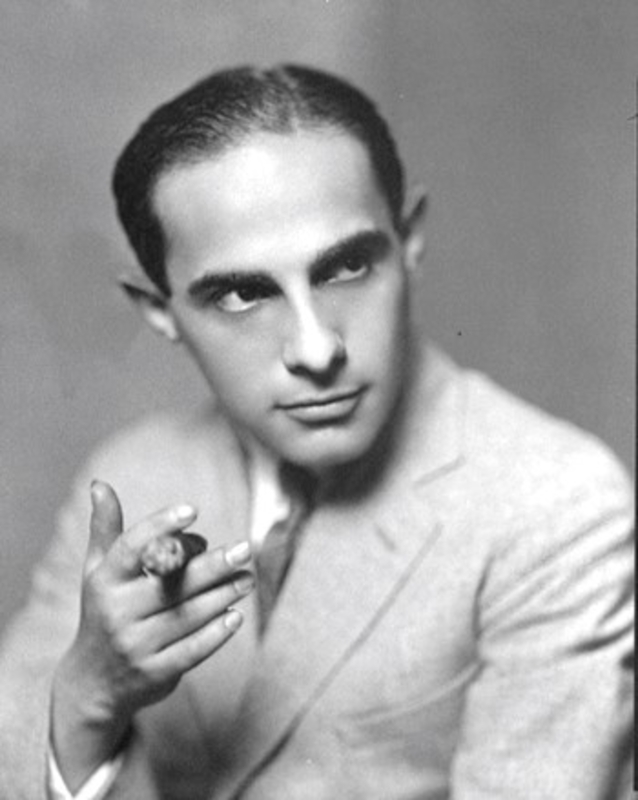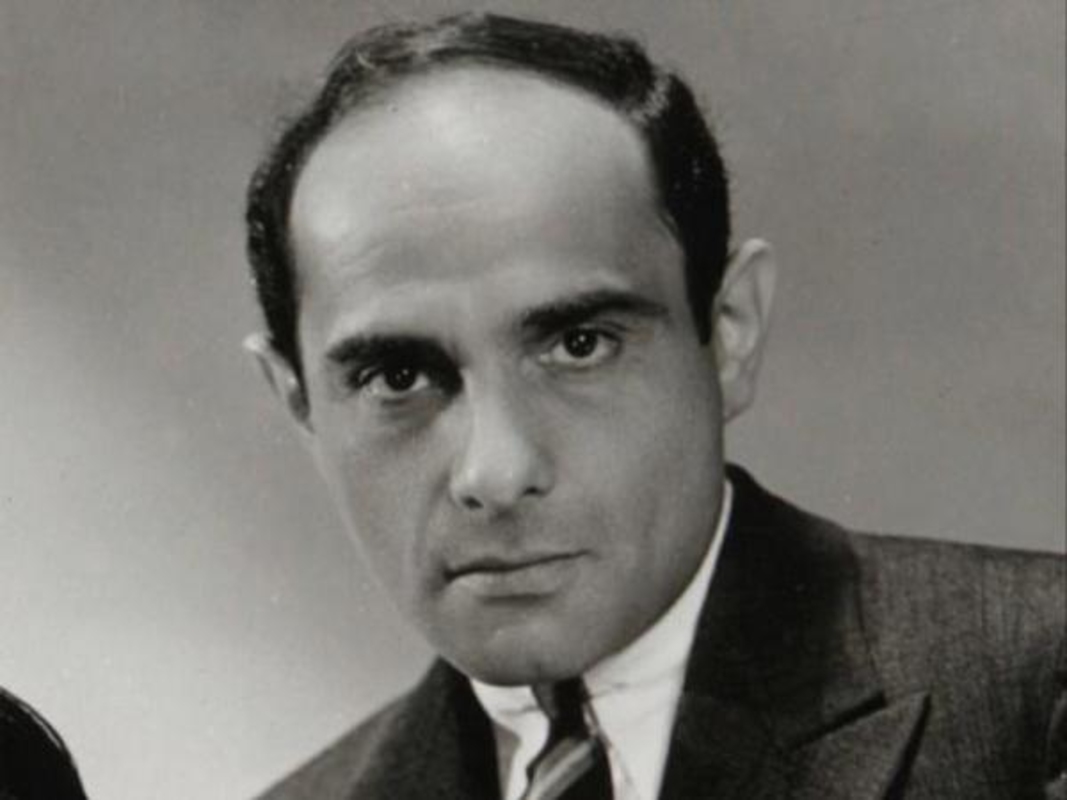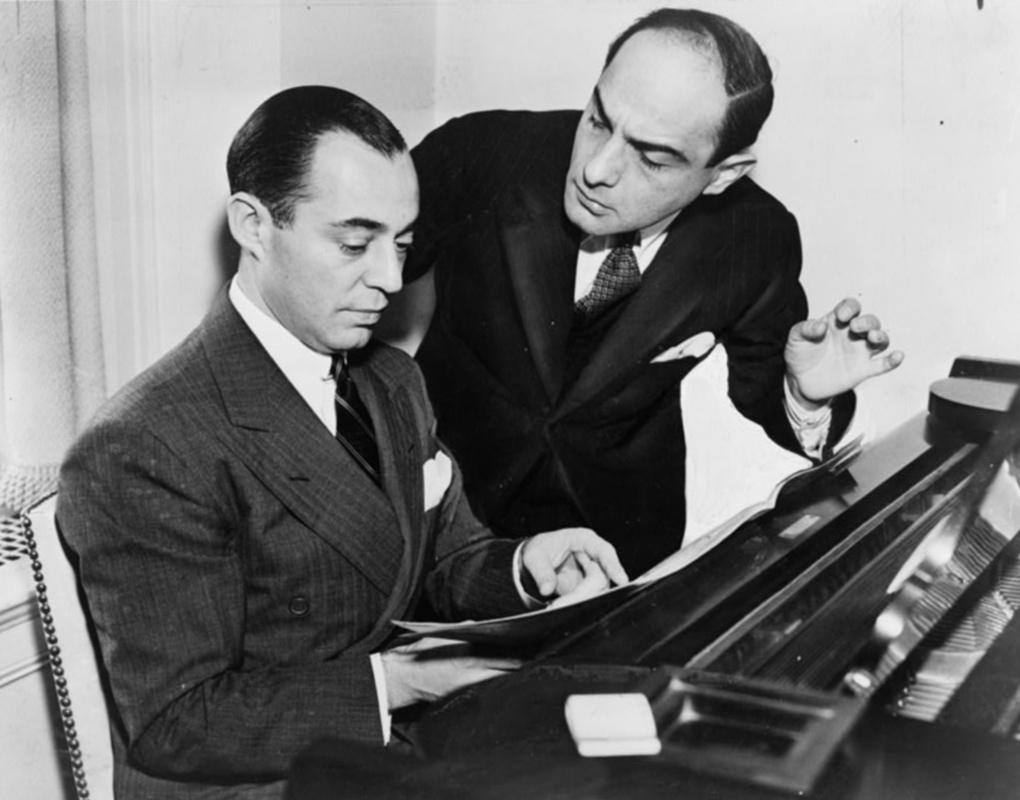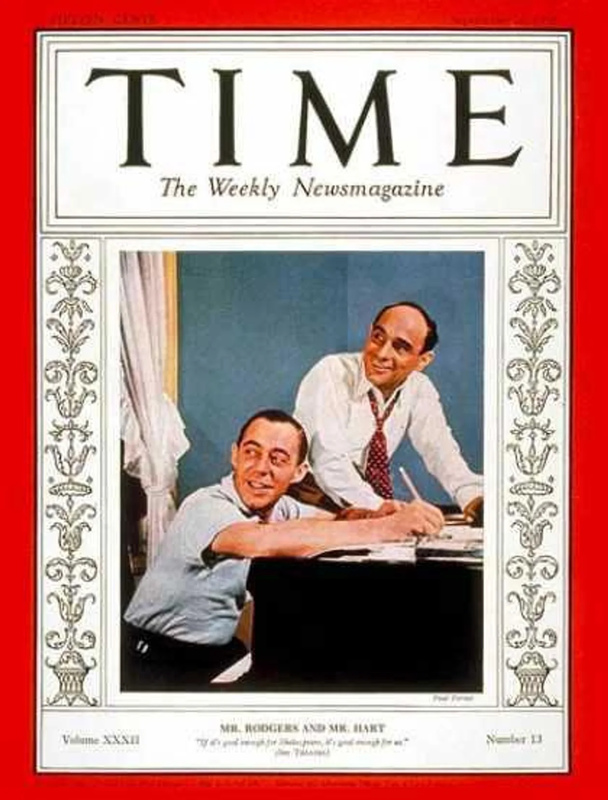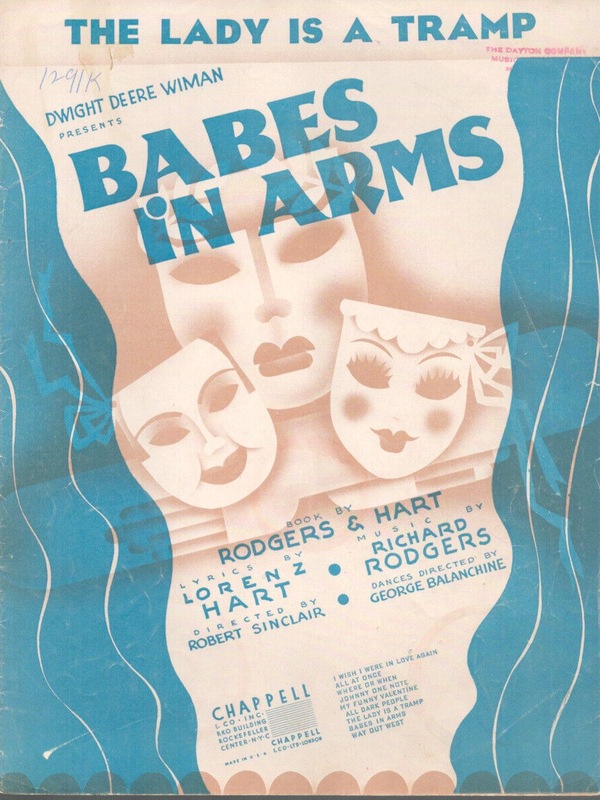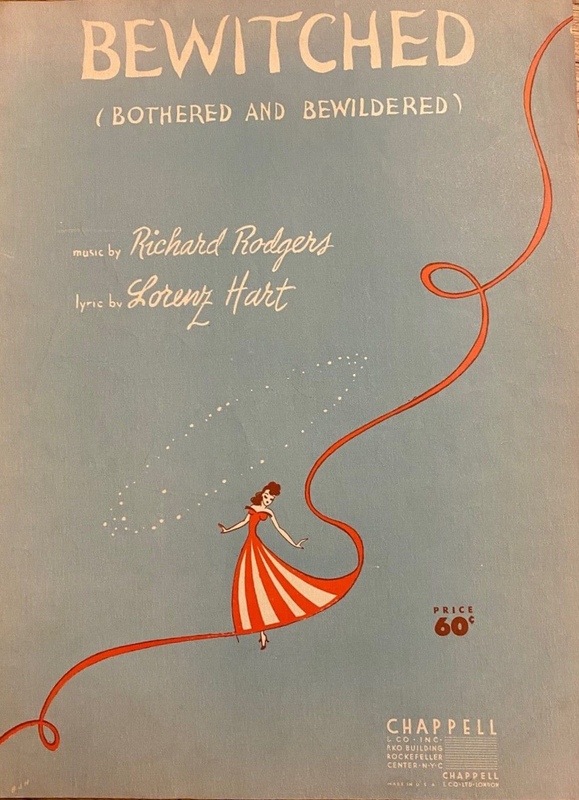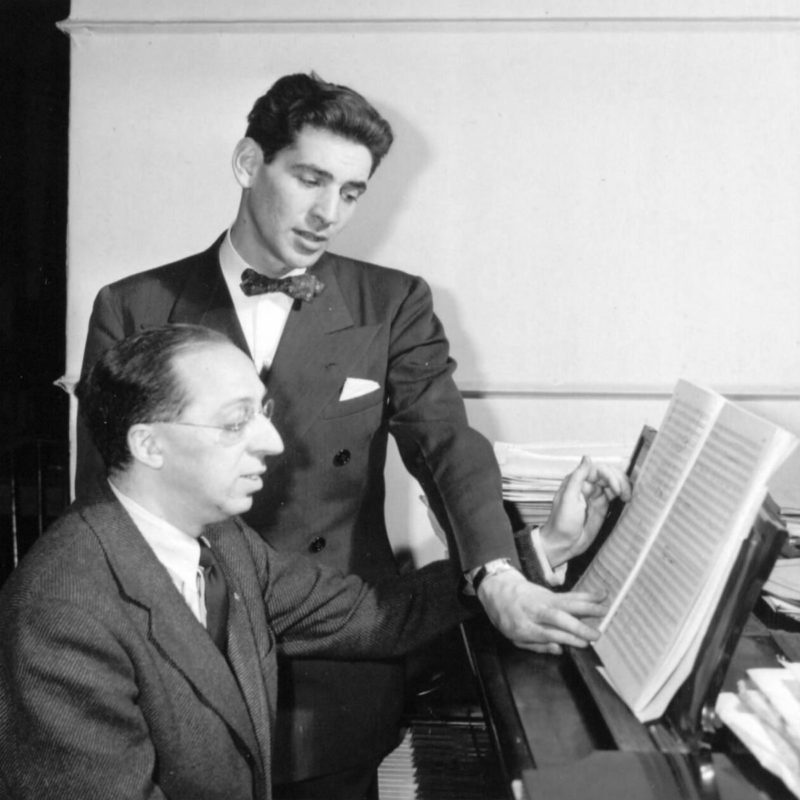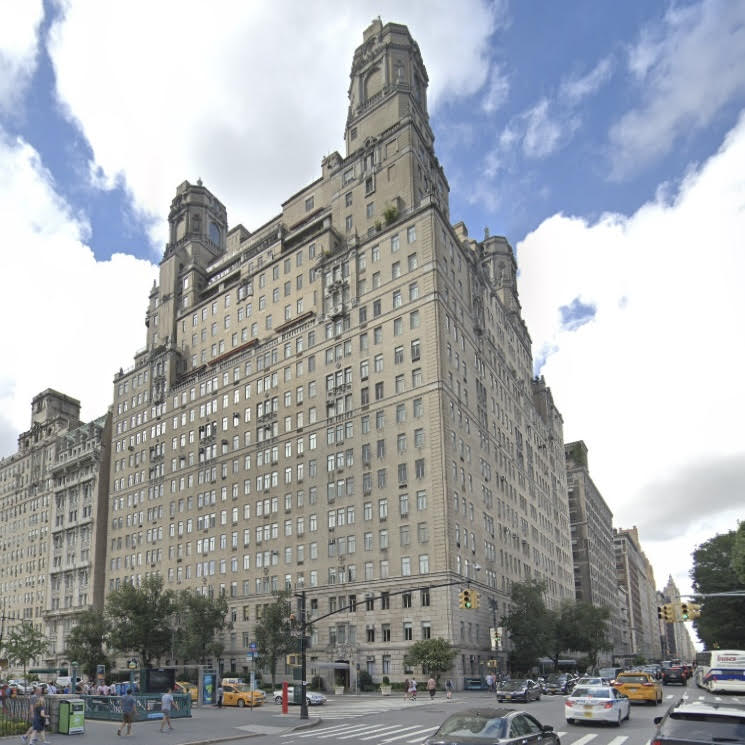
Lorenz Hart Residence at the Beresford Apartments
overview
Many of the most popular lyrics of the American Songbook from the 1920s and 1930s were the work of Lorenz Hart, who lived at the Beresford from 1935 to 1939.
His songs for Broadway and Hollywood, written with Richard Rodgers, have been covered by many of the great recording artists of the 20th and 21st centuries.
On the Map
VIEW The Full MapHistory
Two of the wittiest and most creative lyricists of the American Songbook, Cole Porter and Lorenz Hart (known as Larry; 1895-1943), were gay men, but they lived radically different lives: Porter as a married man with an active gay life, and Hart as an unhappy bachelor who fell into alcoholism.
Hart was born into a middle-class, German-Jewish family. He grew up in a rowhouse at 59 West 119th Street in Harlem. Hart was less than five feet tall and thought that he was ugly and undesirable, despite his ebullient personality and talent with words. Theater director and writer Josh Logan described Hart as “the most lovable, cuddly, honey bear. He was very small . . .and he was not a beauty, he had a rather gnomelike face and body, and a very explosive personality.” He was hyperactive – always rubbing his hands together – and would inevitably be found puffing on a cigar.
In 1919, the 23-year-old Hart met the precocious, sixteen-year-old tunesmith Richard Rodgers and a partnership was born. They wrote music and lyrics for Columbia College’s annual varsity shows (both had attended Columbia), but their breakthrough came in 1925 when the Theatre Guild invited Rodgers & Hart to write the songs for The Garrick Gaieties, which was to run for only two performances, but was such a success that it ran for six months. The score included their first big hit, “Manhattan” (with the memorable lyrics, “I’ll take Manhattan, the Bronx and Staten Island Too”).
Together, Rodgers & Hart wrote the music and lyrics for 26 Broadway shows, as well as songs for Hollywood movies. In 1927, with growing financial success, Hart moved with his parents and brother into a penthouse at 415 Central Park West at 101st Street. In 1935, he, his brother and mother moved into a large penthouse at the Beresford, one of the grandest buildings on Central Park West. He and his mother stayed until moving to a smaller terraced duplex at the Ardsley, 320 Central Park West, in 1939. Hart moved to the Delmonico Hotel on Park Avenue and 59th Street in 1943, shortly before his death.
While living at the Beresford, Hart’s Broadway career peaked, with productions of Jumbo (1935), On Your Toes (1936), Babes in Arms (1936), and The Boys from Syracuse (1938). The songs in these musicals have become standards. Babes in Arms, for example, included “Where or When,” “I Wish I Were in Love Again,” “Johnny One Note,” “My Funny Valentine,” and “The Lady is a Tramp,” and The Boys from Syracuse featured “Falling in Love with Love,” “This Can’t Be Love,” and “Sing for Your Supper.” In 1940, Rodgers & Hart’s most innovative and controversial show, Pal Joey premiered, with Gene Kelly playing an unsympathetic heel; it debuted songs such as “I Could Write a Book” and “Bewitched, Bothered and Bewildered.”
Hart’s final lyrics were for a 1943 revival and reconceptualization of the earlier A Connecticut Yankee, which included “To Keep My Love Alive,” one of Hart’s funniest songs debuted by his favorite actor Vivienne Segal. By the time he was working on this project Hart had become a serious alcoholic and he died shortly after opening night at the age of 48. He is buried in the family plot at Mt. Zion Cemetery in Maspeth, Queens. Historian Robert Dawidoff has written that “his steady refusal to do anything about his drinking or finally take care of himself add up to a picture of torment that can be attributed in considerable part to his feelings as a middle-class Jewish gay man in a subculture and a society that wouldn’t accept him, let alone help him to accept himself as gay.”
Hart’s intimate life remains something of a mystery as he never spoke about it and there is no evidence of a long-term relationship. Hart would often disappear for one or more days, and his biographers have speculated that he may have frequented upscale male brothels, or perhaps had a small apartment for sexual assignations, or frequented Turkish baths. According to Gary Marmorstein, when living in Hollywood, Hart apparently felt somewhat freer than in New York, where his mother was always watching.
Those he worked closely with were aware of his sexuality. The homophobic actor Maurice Chevalier, who sang Rodgers & Hart songs in several movies, told his assistant to steer clear of Hart “or he’ll try to get into your pants” and when the reporter for a Hollywood gossip journal asked Rodgers if Hart was “a fairy,” an agitated Rodgers replied that “I have never heard that…and if you print it, I’ll kill you.”
Hart’s unhappy life helps explain the bittersweet nature of many of his love songs. As New York Times arts critic Stephen Holden wrote about his lyrics, “it is the rueful vulnerability beneath their surface that lends them a singular poignancy.” Holden notes that “Hart’s vulnerability wasn’t a fiction created out of thin air. Many of his lyrics were the confessional outpouring of a hopeless romantic who loathed his own body.” Holden does find a few hints of what he refers to as Hart’s “tormented erotic life” in his songs, notably in “He Was Too Good To Me,” a standard that was cut from the 1930 show Simple Simon:
When I was mean to him
He’d never say ‘Go ‘way now’
I was a queen to him
Who’s goin’ to make me gay now?
Other LGBT Notables at the Beresford
Hollywood star Rock Hudson (1925-1985) lived in apartment 19D for several years before his death from AIDS-related complications, the first major American celebrity to die from the disease. Prominent anthropologists Margaret Mead (1901-1978) and Rhoda Métraux (1914-2003) were professional and personal partners who lived together at the Beresford from 1966 until Mead’s death in 1978. They moved here from Greenwich Village, where they had resided in a rowhouse at 193 Waverly Place that Métraux purchased in 1955. Both had longtime associations with the American Museum of Natural History, located one block south of the Beresford.
Entry by Andrew S. Dolkart, project director (April 2024).
NOTE: Names above in bold indicate LGBT people.
Building Information
- Architect or Builder: Emery Roth
- Year Built: 1928-29
Sources
Frederick Nolan, Lorenz Hart: A Poet on Broadway (New York: Oxford University Press, 1994). [source of Josh Logan quote, 243]
Gary Marmorstein, A Ship Without a Sail: The Life of Lorenz Hart (New York: Simon & Schuster, 2012). [source of Chevalier and Rodgers’ quotes, 241 and 238]
Robert Dawidoff, “The Heart to Hart: Lorenz Hart: A Poet on Broadway,” Los Angeles Times, April 23, 1995.
Robert Gottlieb, “Words and Music,” The Atlantic 311 (April 2013): 90-102.
Stephen Holden, “Just a Sap for Sugar, Love and Sorrow,” The New York Times, April 30, 1995. [source of Holden quotes]
Stephen Holden, “Thou Rodgers, Thou Hart, So Fizzy, So Smart,” The New York Times, January 6, 1977.
Do you have more information about this site?
This project is enriched by your participation! Do you have your own images of this site? Or a story to share? Would you like to suggest a different historic site?
